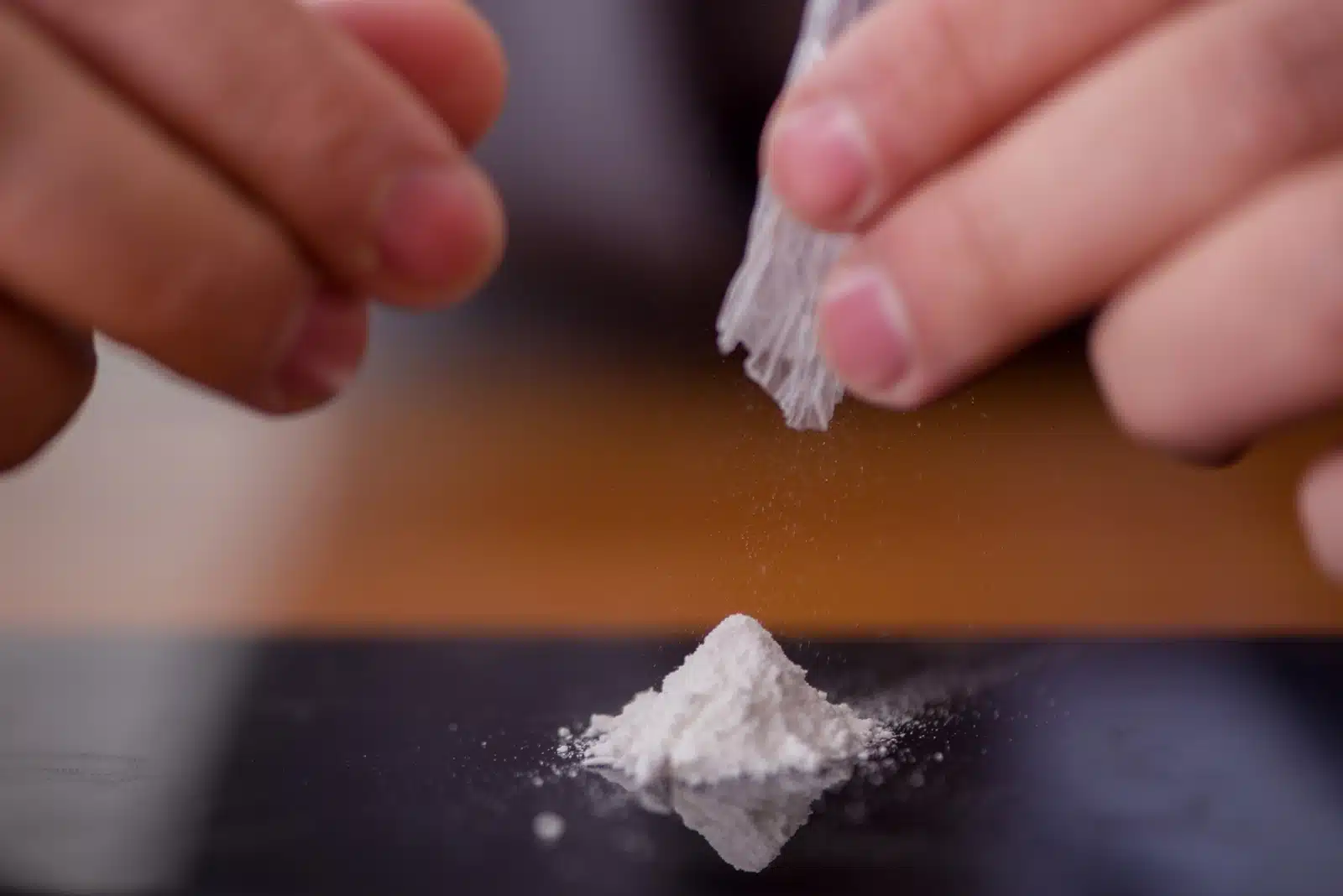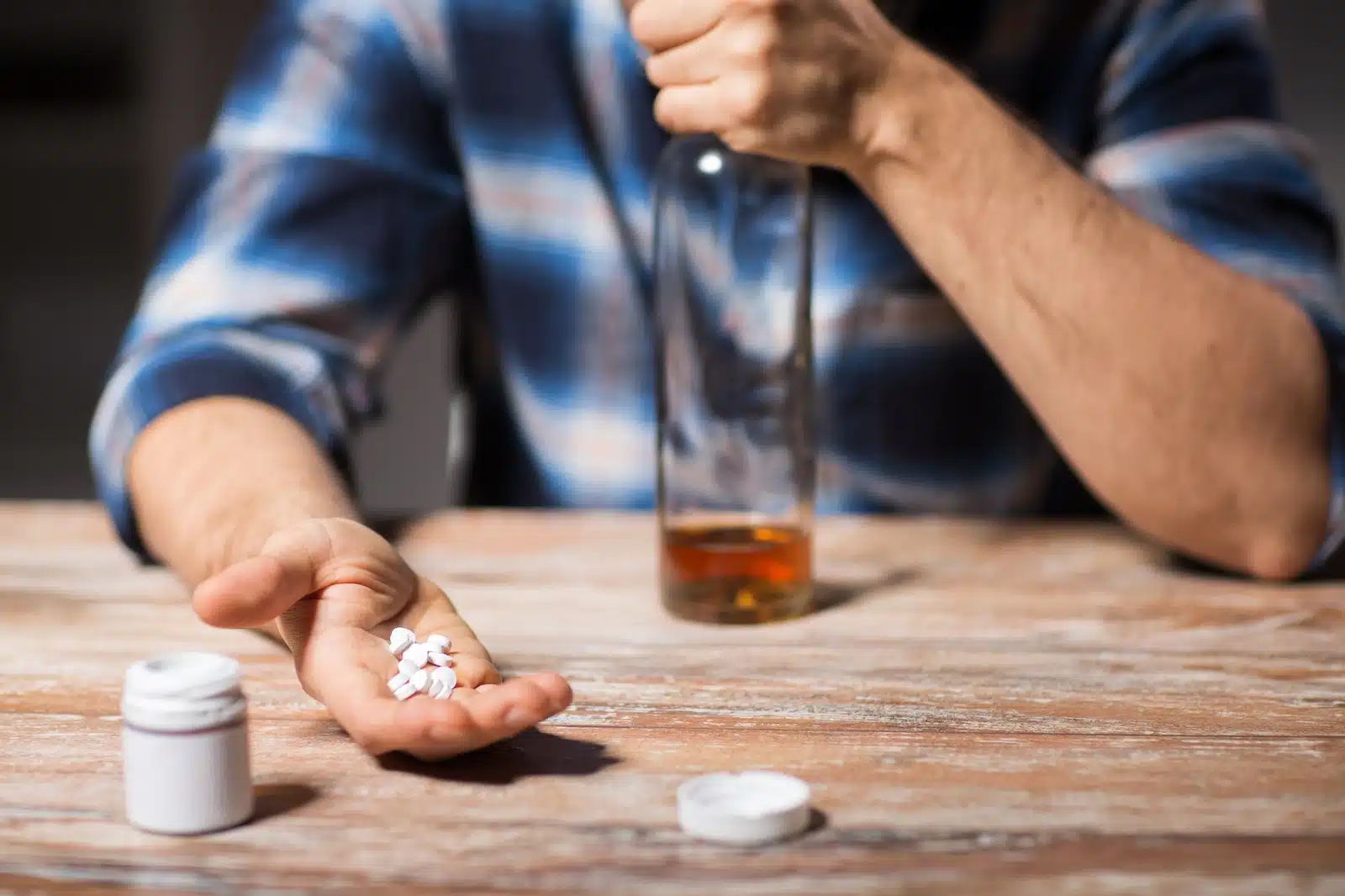Addiction | 4 min read
Substance Use vs Abuse: Where Is the Line?
Medically Reviewed By

On July 22, 2025
Written By
On March 26, 2019

What you will learn
- Substance use refers to the casual or occasional use of drugs or alcohol and isn't always harmful but can lead to negative consequences.
- Substance abuse refers to a pattern of substance use that leads to significant impairment or distress.
- Dependence can develop in people who use substances responsibly or with substances that aren’t associated with drug abuse or drug addiction.
- Addiction is a chronic, relapsing disorder characterized by compulsive substance use despite harmful consequences.
- Professional addiction treatment offers structured, personalized care that can get to the root causes of addiction and help you reach recovery.
In our fast-paced, high-pressure society, some individuals may turn to substance use as a way to unwind, but this can carry risks, especially when it becomes habitual or leads to harmful consequences. But when does casual substance use cross the line into problematic use or substance abuse?
Understanding the differences between substance use, substance abuse, dependence, and addiction is important to know when to seek help. If you or someone you know is struggling, recognizing the signs and seeking treatment early can get you on a path to healing.
Substance Use vs. Substance Abuse
Substance use refers to the casual or occasional use of drugs or alcohol. This may be drinking a glass of wine at dinner, having a beer after work, or taking a prescribed medication as directed. Not all substance use is harmful, but when its use leads to negative consequences, it crosses the line into substance abuse.
Substance abuse refers to a pattern of substance use that leads to significant impairment or distress, as defined in clinical criteria like those in the DSM-IV; this concept has been replaced by ‘substance use disorder’ in the DSM-5. This can include using a substance:
- In higher doses than prescribed or intended
- For reasons other than intended, such as taking a drug to get high instead of using it for pain relief
- Despite negative effects at home, work, or school
Common signs of substance abuse include:
- Neglecting responsibilities
- Strained interpersonal relationships
- Legal troubles
- Financial troubles
- Engaging in risk-taking behaviors like driving under the influence
Substance Abuse vs. Dependence
In older classifications like the DSM-IV, substance abuse and substance dependence were distinct diagnoses; however, the DSM-5 combines them under ‘substance use disorder,’ which considers both behavioral patterns and physiological dependence. Dependence can develop in people who use substances responsibly or with substances that aren’t associated with drug abuse or drug addiction.
The two types of dependence are:[1]
- Physical dependence: The body adapts to the substance and experiences withdrawal symptoms like nausea, tremors, insomnia, anxiety, or flu-like symptoms when its use is stopped.
- Psychological dependence: The mind thinks that it needs the substance to function, feel normal, or cope with stress.
Dependence can occur with medications like antidepressants or corticosteroids, even though these drugs are not typically associated with substance use disorders.[2] Having drug dependence doesn’t always mean you’re addicted, but it can be a component of addiction, particularly with drugs of abuse.
What Is The Difference Between Addiction and Abuse?
Addiction is a chronic, relapsing disorder characterized by compulsive substance use despite harmful consequences, involving neurobiological changes that affect reward, motivation, memory, and related circuitry.
According to the American Psychiatric Association’s Diagnostic and Statistical Manual of Mental Disorders (DSM-5), some of the signs of addiction, or substance use disorder, include:[3]
- Cravings for the substance
- Desire or failed attempts to control substance use
- Failure to fulfill responsibilities at work, home, or school
- Giving up on leisure activities for substance use
- Using substances in dangerous situations
- Continuing substance use despite known problems
Statistics on Substance Abuse and Addiction
- Approximately 48.5 million Americans aged 12 or older struggled with a substance use disorder in the past year (2023).[4]
- An estimated 80,391 overdose deaths occurred in the U.S. in 2024.[5]
- 35% of adults aged 18 and over in the U.S. who have a mental disorder also have a substance use disorder.[6]
- Drug use is highest among people between the ages of 18 and 25.[7]
- People who try an illegal drug before age 15 are 6.5 times more likely to develop a substance use disorder than those who wait until age 21 or later.[8]
When Does Substance Use Become a Problem?
There’s no clear line or moment when recreational drug use crosses into addiction. Risk factors, use patterns, and consequences are more important. If substance use causes problems in your relationships, school or work responsibilities, or health, it’s time to evaluate your behaviors.
Are you lying about your alcohol abuse or hiding it? Are you isolating yourself or shifting your social circles, spending more time with people who also engage in drug misuse? Are you shirking your responsibilities because of substance use? Is substance use a means of escape or coping with difficult emotions?
There can be physical signs of substance abuse as well, including sudden changes in mood or appearance, fatigue or agitation, and withdrawal symptoms if you stop or cut back on substance use. Generally, if you’re questioning whether your substance use is a problem, it’s worth giving it more consideration.
Treatment Options for Substance Use Disorders
Seeking help for substance use can be challenging, but it’s one of the most important steps to take for your health. Professional addiction treatment offers structured, personalized care that can get to the root causes of addiction and help you reach recovery.
Some of the available addiction treatment services include:
- Medical detox: This is a crucial first step to overcome physical dependence and undergo the withdrawal process in a safe, comfortable, and supervised environment.
- Residential treatment: A residential treatment program offers an immersive, structured setting where you reside on-site and receive 24/7 support and care.
- Intensive outpatient treatment (IOP): IOP offers flexibility for those who are ready to transition from residential care or require intensive support while continuing to live at home and manage responsibilities, such as work, school, or family commitments.
- Family therapy: This therapy involves the whole family to rebuild trust, improve communication, resolve old conflicts, and educate loved ones about addiction and recovery.
- Experiential therapy: Experiential therapies, such as mindfulness, meditation, art, and music therapy, can complement traditional therapies and engage the body, mind, and spirit.
- Cognitive behavioral therapy (CBT): This therapy helps you identify unhelpful thought patterns and behaviors and commit to healthier ways of coping with stress or problems.
- Dialectical behavior therapy (DBT): supports emotional regulation and distress tolerance.
- Motivational interviewing (MI): MI is a type of therapy that encourages self-reflection and strengthens the resolve toward positive change.
- Alumni Support and Aftercare: Recovery Doesn’t Stop After Addiction Treatment Ends. Alumni services keep you engaged and committed to the process in the long term.
Don’t Delay: Start The Recovery Process Today!
If you or a loved one is currently living with substance abuse and seeking evidence-based addiction services, help is available. Taking the first step now puts you on a path to holistic recovery and healthier living.
Was this article helpful? Follow our blog for more information about addiction, substance use, and how to get help.
Frequently Asked Questions About Substance Use vs. Abuse
The terms drug abuse and substance abuse are often used interchangeably, but addiction is a distinct condition involving compulsive use despite harm. Substance use refers to the casual or prescribed use of drugs or alcohol, while substance abuse is a harmful and nonmedical use of a substance that may lead to negative consequences. Addiction is a chronic medical condition that involves the compulsive use of substances, despite the problems it causes.
If you or a loved one can’t stop using substances like cannabis, alcohol, or opioids despite repeated attempts, experience withdrawal symptoms when trying to quit, or struggle with work, relationships, or legal issues due to substance use, or rely on substances to cope with stress, anxiety, or trauma, it may be time for professional addiction treatment and support.
Substance abuse is the harmful use of substances, including illicit drugs, prescription drugs, or alcohol, that can lead to negative consequences. Substance dependence involves physical or psychological reliance on a substance, leading to withdrawal symptoms if you try to cut back or stop.
Ascendant New York Editorial Guidelines
Here at Ascendant New York, we understand the importance of having access to accurate medical information you can trust, especially when you or a loved one is suffering from addiction. Find out more on our policy.
[1] Psychological dependence: EBSCO. EBSCO Information Services, Inc. | www.ebsco.com. (n.d.). https://www.ebsco.com/research-starters/psychology/psychological-dependence
[2] Szalavitz, M., Rigg, K. K., & Wakeman, S. E. (2021, December). Drug dependence is not addiction-and it matters. Annals of medicine. https://pmc.ncbi.nlm.nih.gov/articles/PMC8583742/
[3] What is a substance use disorder?. Psychiatry.org – What Is a Substance Use Disorder? (n.d.). https://www.psychiatry.org/patients-families/addiction-substance-use-disorders/what-is-a-substance-use-disorder
[4] Highlights for the 2023 National Survey on Drug Use and … (n.d.-a). https://www.samhsa.gov/data/sites/default/files/NSDUH%202023%20Annual%20Release/2023-nsduh-main-highlights.pdf
[5] Centers for Disease Control and Prevention. (2025, May 14). U.S. overdose deaths decrease almost 27% in 2024. Centers for Disease Control and Prevention. https://www.cdc.gov/nchs/pressroom/nchs_press_releases/2025/20250514.htm
[6] U.S. Department of Health and Human Services. (2024, October 3). Co-occurring disorders and health conditions. National Institutes of Health. https://nida.nih.gov/research-topics/co-occurring-disorders-health-conditions#mental
[7,8] Substance abuse and addiction statistics [2025]. NCDAS. (2025, July 7). https://drugabusestatistics.org/




